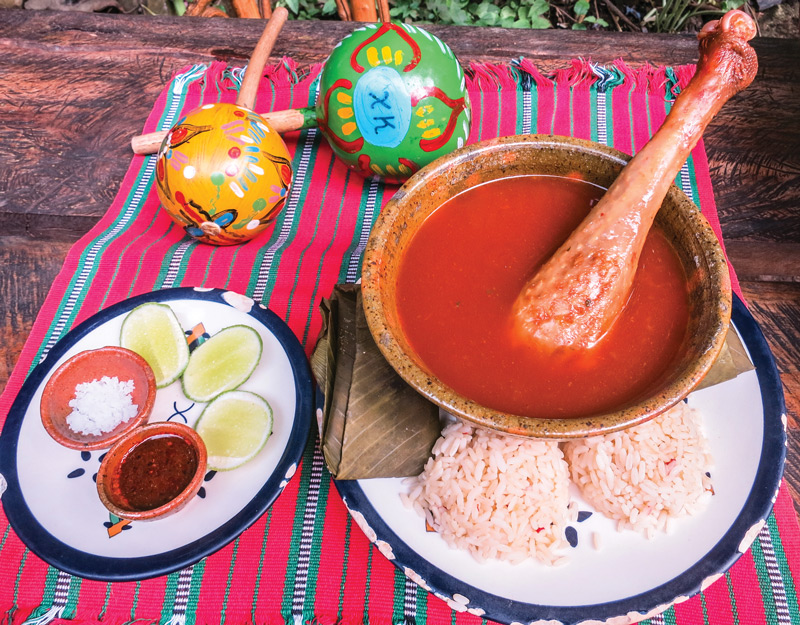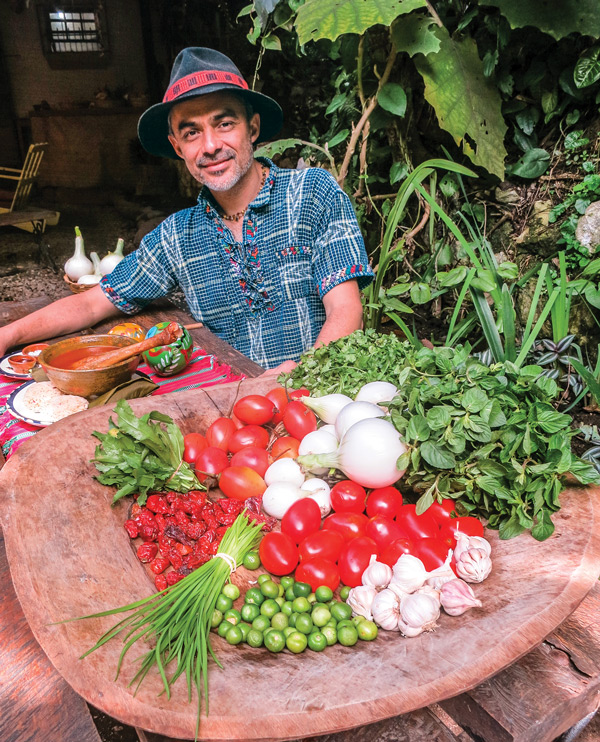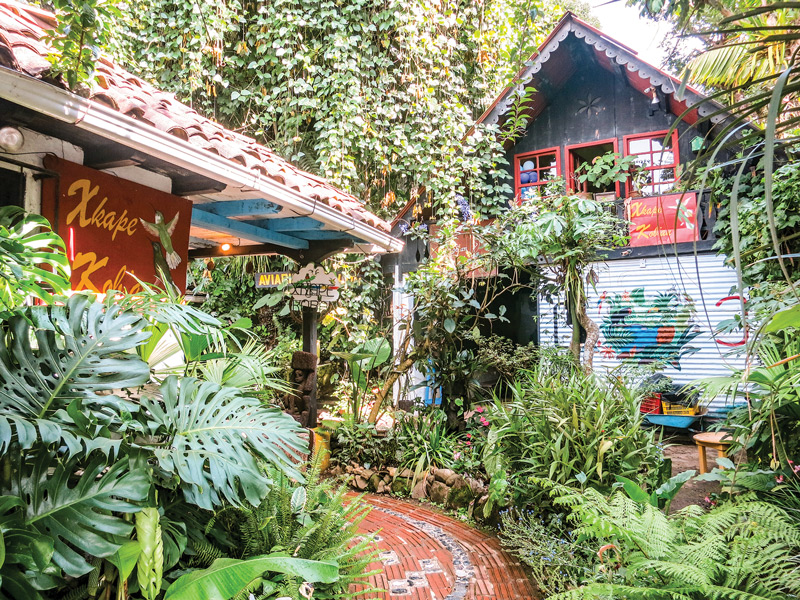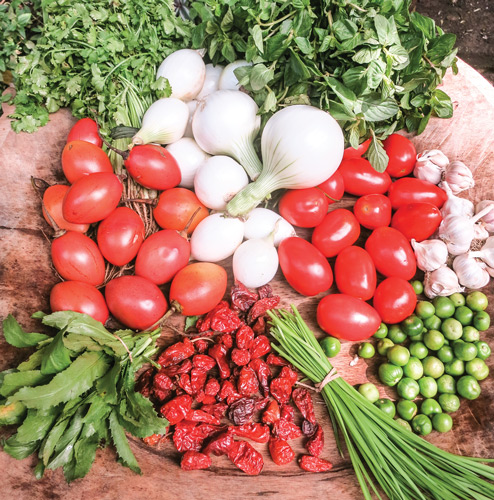Kaq’ik
Kaq’ik is a spicy Guatemalan Turkey Soup.
In the predominantly Kekchi-speaking Maya municipality of Cobán, Alta Verapaz, I recently had the very good fortune of experiencing some of Guatemala’s most ancient and traditional food dishes.
One of these dishes, Kaq’ik, is a savory and spicy red broth made from puréed tomatoes, tomatillos, lots of natural herbs and chilies that are all cooked together and then served with a big juicy turkey leg. Kaq’ik, as I soon came to learn, has a very long history and was eventually declared a Cultural Heritage in 2007 by Guatemala’s Ministry of Culture and Sports. And as with most ancient and cultural heritage dishes, there exist a variety of versions that have all been tweaked over the centuries by someone’s abuela (grandmother).
“Xkape Ko’ban pays homage to all abuelas,” said Byron Cordova, an owner and a chef at this enchanting café and restaurant located in the heart of central Cobán. “I wanted it to smell just like my grandmother’s house, which is brimming with amor de la vida,” he proclaimed proudly.
Tucked away off the beaten path, Xkape Ko’ban is a unique respite from the daily hustle and bustle of Cobanero life. I find myself completely entranced each time I enter its magical gardens and aviary. And a visit to Xkape is as much an educational experience in Maya culture as it is in the culinary arts.
Here you can browse an eclectic gift shop filled with locally produced natural products, discover the most delicious handmade tamarind candies and learn about Maya medicinal plants.
Cordova, whose grandmother from his father’s side is Kekchi, founded Xkape with his partners 13 years ago in February. “This is a significant milestone,” he explained, “because it corresponds with Maya cosmovision and its cyclical calendar of 13 years.”
Cordova studied agro ecology and founded Xkape on the agro ecological and permaculture systems of the indigenous. “My objective,” he stated, “was to showcase the cultural heritage and traditions of the Verapaz region with a heavy emphasis on Kekchi culture and cuisine.”
“Ik” means spicy in Kekchi, which is why one of Kaq’ik’s main ingredients is a hot, dry Cobanero chili. “It’s what gives this soup its special character,” said Cordova. “Kaq” means red, but its color also denotes an ancestral and ceremonial aspect to the dish, he explained.
Traditionally, Kaq’ik is served at celebratory events such as weddings, birthdays and house christenings. And because ritual is such an important part of Maya culture, fresh turkey blood has been known to make its way into the ground and spread around important points of a new house construction.
Even today in many areas of Alta Verapaz, Kekchi women keep the tradition alive by killing, cleaning and preparing the turkey just as it has been done for centuries.
Making the broth for Kaq’ik is easy and essentially requires simmering the onion and garlic first followed by the tomatoes and tomatillos in a large pot and adding some water. In Alta Verapaz, there is an abundance of tree tomatoes or tomate de árbol, which are also added to the mixture.
If you enjoy a charred flavor, Cordova says it’s best to first grill the vegetables a la plancha, allowing them to soften before adding to the stew with some achiote (annatto seed) for color and the Cobanero chilies al gusto.
After simmering over low heat for an hour or two, add some fresh cebolline (chive), hierbabuena (mint) and samat (wild cilantro) and finally season to taste with salt.
Depending on whose recipe is used, the turkey or chunto is cooked separately in water or chicken broth with a good handful of the fresh herbs thrown into the pot. Just before serving, the Kaq’ik gets assembled with the turkey leg dipped into the broth and garnished with some of the fresh samat and mint.
Kaq’ik is usually accompanied by small portions of rice and tamalitos, or pochitos as they are known in Verapaz, filled with masa (corn flour) that have been steamed in banana leaves.
REVUE article: text and photos by Kerstin Sabene




beautiful article and photos – but no recipe? Did I miss something?
love your articles……